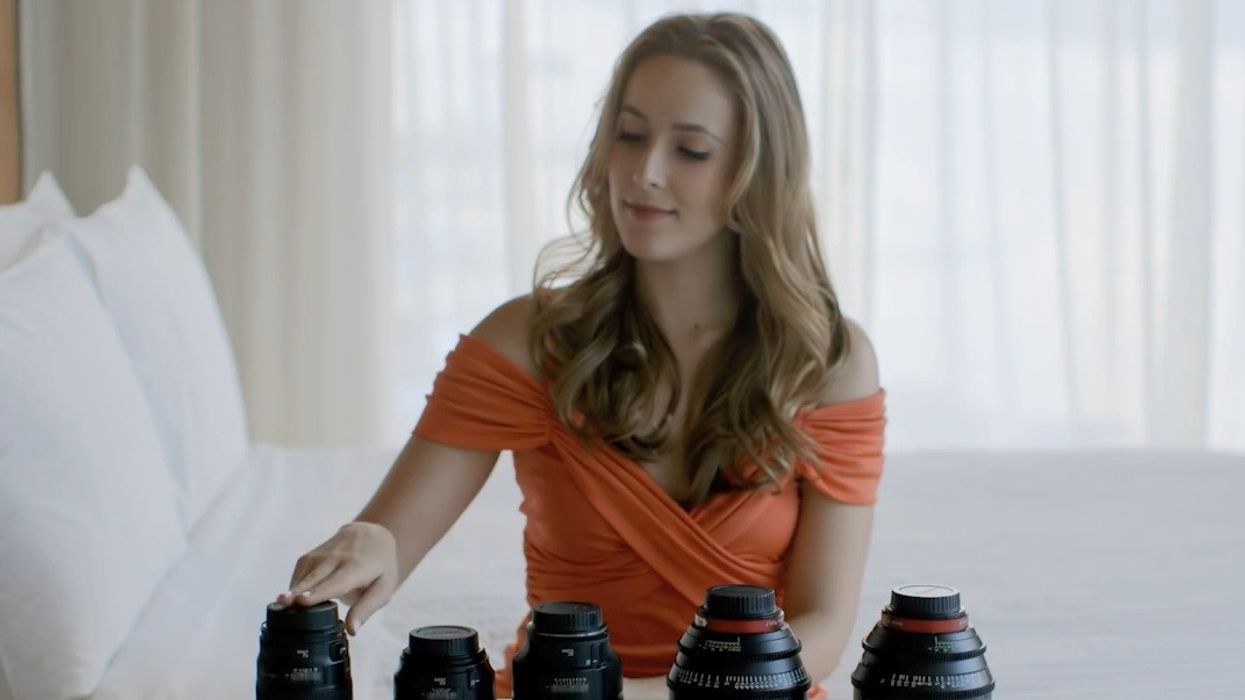Canon Cine Primes vs. L Series Lenses on the C300: a Delightfully Irreverent Shootout from Jonathan Yi

Camera and lens tests can be boring to watch. I know because I've done them myself and have therefore come to that conclusion -- but it doesn't always have to be like that. Jonathan Yi, a director and DP who recently participated in the Vimeo Video School 2012 Year in Tech: Reflections and Predictions conversation with me, has been producing funny and refreshing camera and lens tests for quite some time now, and we shared his hilarious C300 test a while back. Now he's back with a brand new and relatively NSFW test featuring Canon's CN-E Cinema Prime lenses vs. the Canon L Series still photography lenses. Click through to check it out.
Here is a little bit about the test, thanks to planet5D for the find:
My friends at Canon USA allowed me the opportunity to field test their amazing new Cinema Prime Lenses. I originally convinced Canon to allow me to borrow the three lenses for my personal documentary shoot on Peelander-Z. Using the lenses immediately made the project look so much better, especially combined with my custom Ergocine rig on concert shoots. But like many documentaries, the project ended up expanding into something much larger than I originally anticipated and it came time for me to return the lenses to Canon. I was able to buy some more time with the lenses with the understanding that I’d make this test video for them.
The test, which was shot on the Canon C300:
Exceptional male nudity and language aside, I'm really liking the look of these Canon lenses, especially over the standard photo lenses. Many people find the L Series very clinical and almost too sharp, but I feel like they've done something to make the new Cine Primes just a little sweeter and more refined in their optical quality. This may come down to build quality or hand-picking the glass for each lens much more carefully than their photography lenses, but in my mind there is enough of a difference based on the above test that they could be worth a rental over using some Canon lenses you already own, especially if you can benefit from the smooth iris and focus rings.
I would be very interested to see how these stack up with much more expensive sets, like Cookes, Ultras, or Master Primes. They may not perform as well, but Canon definitely knows how to make glass, so they would probably hold their own, which would be impressive given their price compared to other cine lenses (these come in at around $5,000 a piece). I might prefer Nikon for a lot of what I do, but I could definitely see myself shooting with these, especially since they are so much more user friendly for cinema shooting compared to still photography lenses. The one big difference is that these are only being produced with the Canon EF mount, so you'd have to have a camera with the right mount, like a Canon DSLR or C100/C300/C500 -- or even a RED SCARLET or EPIC.
We've already shared another test between theses sets of lenses thanks to Magnanimous Media, so be sure to check that one out as well.
What do you think? Worth a rental for the next project you're shooting? Let us know your thoughts below.
Links:
- Jonathan Yi -- Website
- Canon CN-E 24mm T/1.5 — B&H
- Canon CN-E 50mm T/1.3 — B&H
- Canon CN-E 85mm T/1.3 — B&H
- Canon 24mm F/1.4 — B&H
- Canon 50mm F/1.2 — B&H
- Canon 85mm F/1.2 — B&H
[via planet5D]













